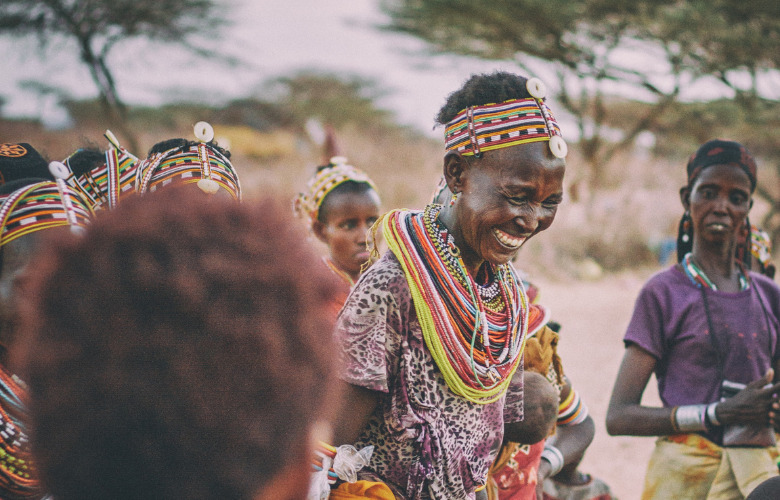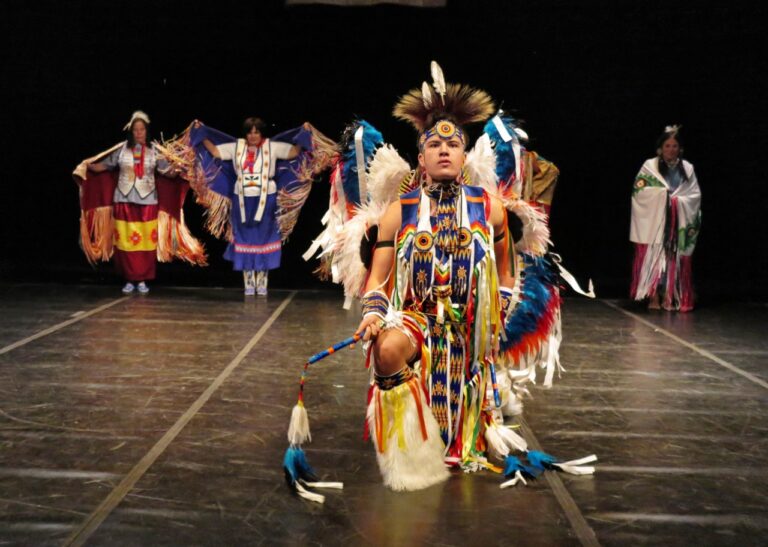
Often, when we hear the word “indigenous,” we immediately think of the indigenous peoples of North America. However, indigenous theatre is a type of performance that is based on the storytelling traditions of any specific indigenous culture around the planet. It can be used as a form of entertainment, therapy, or education. Indigenous theatre often includes music, dance, and visual arts. It can be performed in a variety of settings, including homes, community centers, and schools.
Indigenous performances tell stories of old as well as modern tales, often also exploring and processing themes around human rights and equity.
Many indigenous performances strive to identify and reaffirm the respective peoples’ traditional expressions, worldviews, and performance structures.
And as mentioned before in our introduction, indigenous performances can be found all over the planet.
Some of the more well-known cultures are the Australian Aboriginals, New Zealand’s Maori people, the hundreds of North American indigenous tribes, as well as Meso and Central American tribes.
Then there are indigenous peoples from the Amazon, Artic, Asia, and the Pacific, to name just a few more examples.
There is a myriad of artistic expression in performance (and other art forms of course as well) within all these distinctly unique cultures.
Simplified, there are three types of indigenous theatre: ceremonial, ritual, and performative.
Ceremonial theatre is used to commemorate important events or to teach moral lessons. Ritual theatre is used to enact religious ceremonies. Performative theatre is used to entertain or to tell stories.
Some occasions when these forms of theatre art are performed include religious or cultural ceremonies. As a form of entertainment. Or for a specific performance to tell a particular story.
In African cultures, for example, indigenous performance has long been part of daily life, with a wide range of forms of music, dance, storytelling, and masking still being performed to this day.
It is critical to preserve and promote African culture, and indigenous performance is a valuable tool for doing so. This art forms will continue to reflect the distinct African cultures of old as well as of the contemporary era.
Performance will always remain a profound base of African culture.
Looking at North America, there is also a long tradition of Native American theatre, which has been used both to preserve cultural traditions and to comment on the issues facing Native American communities.
Native American theatre often incorporates elements of traditional storytelling, music, and dance, and can be both serious and humorous.
Contemporary Native American playwrights are using the theatre to address a wide range of issues, from the experience of Native Americans in the modern world to the challenges of reservation life.
Some tribes, such as the North American Cherokee, for example, have had oral literature passed down over many generations.

Because of this oral tradition, there is no fixed version of any story and performance. The stories told by each speaker and creator vary over time. They still do.
In modern times, however, many efforts have been made to capture some of the great indigenous traditions and stories all around the world on paper, so as not to lose them over time.
Indigenous Theater and Performance of North America Resource Guide
Indigenous Theatre Resource Guide
Forum Theatre: Indigenous Theatre: A Performance Based On Storytelling Traditions
Opera Village Africa – a Vision by Director Christoph Schlingensief
Wunika Mukan, Nigeria-Based Curator, on Giving African Artists a Voice


Liam Klenk was born in Central Europe and has since lived on four continents. Liam has always been engaged in creative pursuits, ranging from photography and graphic design, to writing short stories and poetry, to working in theatre and shows. In 2016, Liam published his first book and memoir, 'Paralian'.
Read Full Profile© 2021 TheatreArtLife. All rights reserved.

Thank you so much for reading, but you have now reached your free article limit for this month.
Our contributors are currently writing more articles for you to enjoy.
To keep reading, all you have to do is become a subscriber and then you can read unlimited articles anytime.
Your investment will help us continue to ignite connections across the globe in live entertainment and build this community for industry professionals.